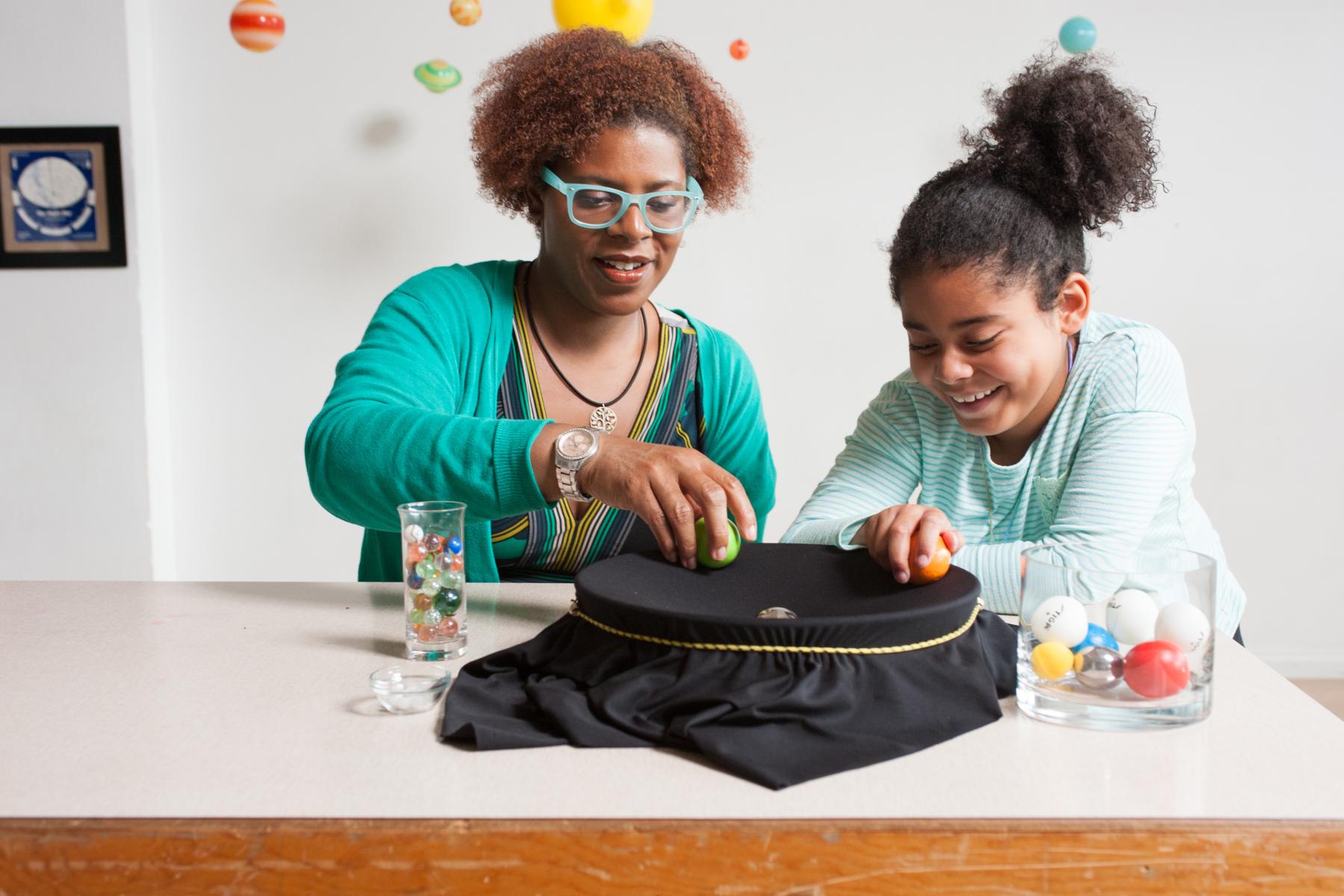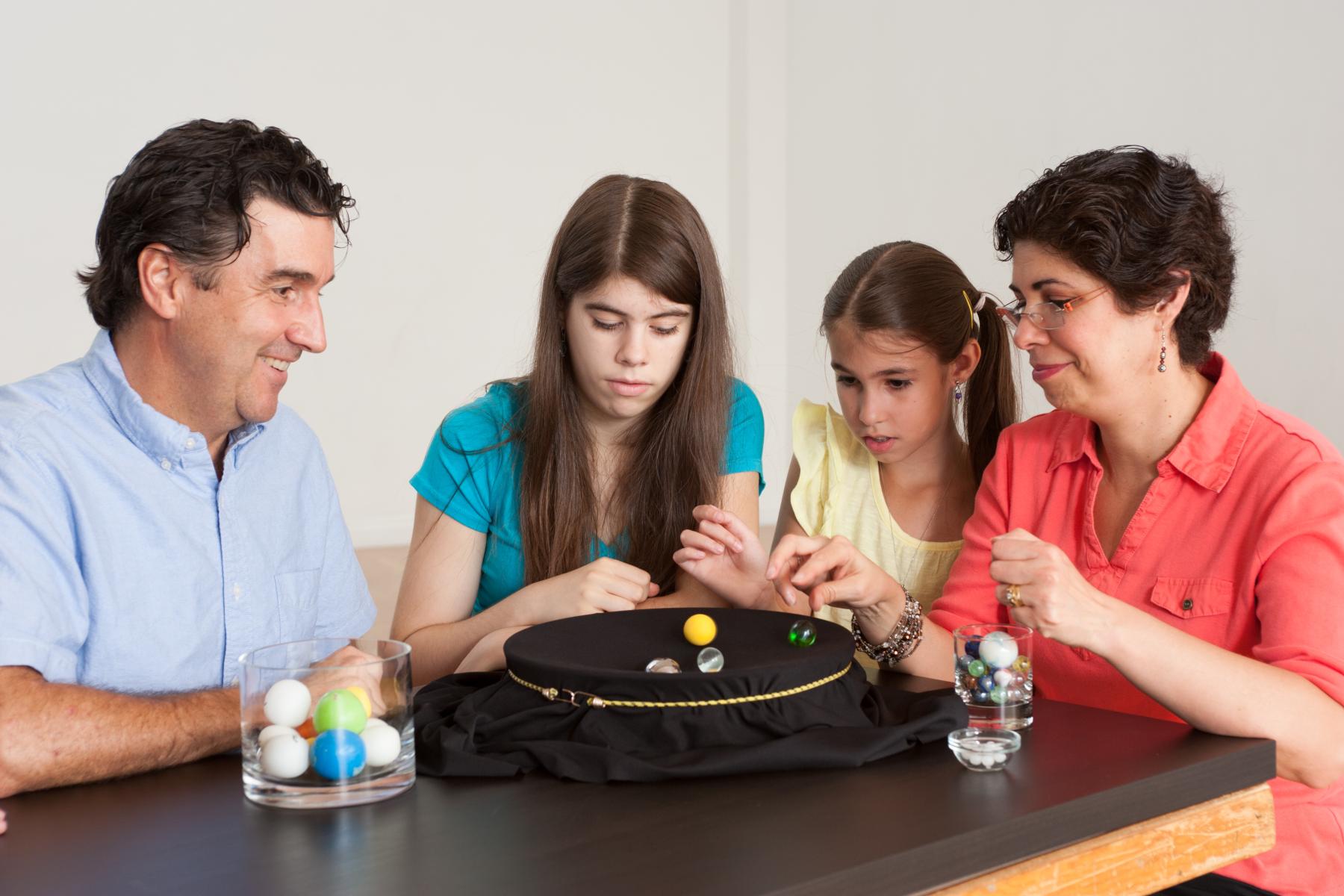DESCRIPTION
"Exploring the Universe: Orbiting Objects" is a hands-on activity that invites visitors to experiment with different sized and weighted balls on a stretchy fabric gravity well. The activity models gravitational attraction in space. Participants investigate how changing conditions can cause phenomena like stellar wobble and planet formation.
DESCRIPTION
"Exploring the Universe: Orbiting Objects" is a hands-on activity that invites visitors to experiment with different sized and weighted balls on a stretchy fabric gravity well. The activity models gravitational attraction in space. Participants investigate how changing conditions can cause phenomena like stellar wobble and planet formation.
TRAINING VIDEOS
OBJECTIVES
BIG IDEA
Weighted objects on a stretchy sheet can model gravitational attraction in space. Changing conditions in this model can explain phenomena like stellar wobble and planet formation.
LEARNING GOALS
The force of gravity influences everything (with mass) in space.
Every object in space exerts a gravitational pull on every other object.
Gravity keeps objects orbiting other objects, and prevents them from flying off into space.
DOWNLOAD FILES
- Exploring the Universe: Orbiting Objects activity guide (PDF)
- Exploring the Universe: Orbiting Objects facilitator guide (PDF)
- Exploring the Universe: Orbiting Objects gravity well instructions (PDF)
- Exploring the Universe: Orbiting Objects Birth of the Solar System info sheet (PDF)
- Exploring the Universe: Orbiting Objects Hunting for Planets info sheet (PDF)
- Exploring the Universe: Orbiting Objects table sign (PDF)
- Exploring the Universe: Orbiting Objects activity guide (Spanish) (PDF)
- Exploring the Universe: Orbiting Objects Birth of the Solar System info sheet (Spanish) (PDF)
- Exploring the Universe: Orbiting Objects Hunting for Planets info sheet (Spanish) (PDF)
- Exploring the Universe: Orbiting Objects table sign (Spanish) (PDF)
Credits
The Science Museum of Minnesota
This material is based upon work supported by NASA under cooperative agreement award number NNX16AC67A. Any opinions, findings, and conclusions or recommendations expressed in this material are those of the author(s) and do not necessarily reflect the view of the National Aeronautics and Space Administration (NASA).
Creative Commons Attribution Non-Commercial Share Alike 3.0 United States (CC BY-NC-SA 3.0 US).
View more details

NISE Network products are developed through an iterative collaborative process that includes scientific review, peer review, and visitor evaluation in accordance with an inclusive audiences approach. Products are designed to be easily edited and adapted for different audiences under a Creative Commons Attribution Non-Commercial Share Alike license. To learn more, visit our Development Process page.




